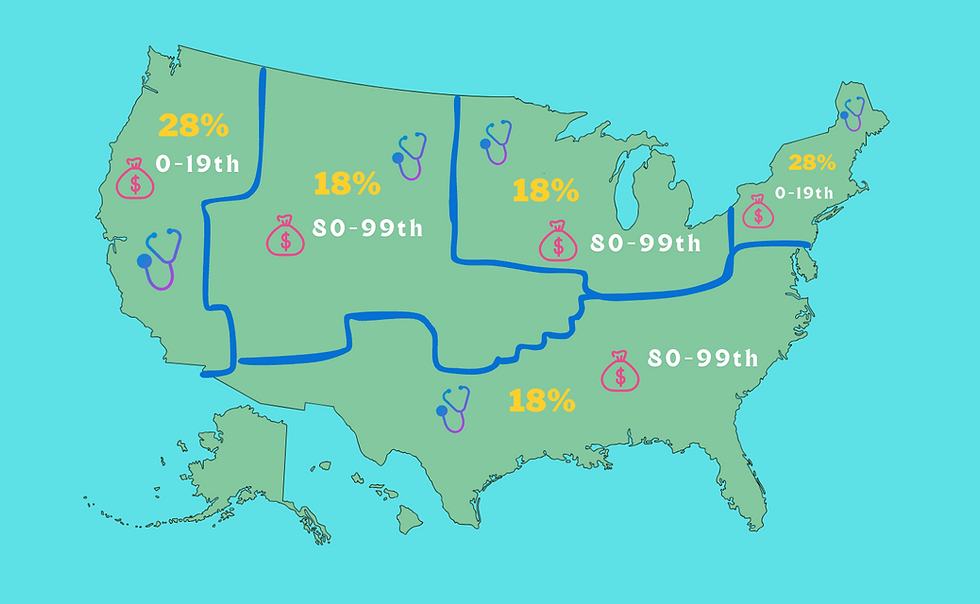- Daniel Sanwo
- Nov 2
- 3 min read
Every year, the U.S. government spends over $47 billion through the National Institutes of Health (NIH) to fund biomedical research [5], driving innovations like cancer therapies and vaccines. Still, it also determines which lives and which diseases receive attention. Behind every grant awarded lies a moral question: who gets funded, and why? As medicine becomes increasingly dependent on financial sponsorships and corporate partnerships, the ethics of research funding reveal a hidden economy connecting grants to bills and as a result, innovation to inequality.
Funding and the Hidden Economy of Discovery
Most medical research depends on competitive grants. Institutions with established reputations and resources (mainly elite universities or major hospitals) often win the majority of awards [3]. Smaller institutions and minority-serving universities struggle to compete, which creates this perpetual cycle of inequality. This unequal distribution affects not only scientists, but also the diseases that receive attention. Conditions that disproportionately affect low-income or marginalized populations, such as sickle cell disease or neglected tropical diseases, receive significantly less research investment as a consequence [2]. Pharmaceutical sponsorship sometimes fills these gaps, but it introduces another ethical dilemma. Studies have shown that industry-funded research is more likely to produce results favorable to sponsors, raising concerns about bias and transparency [4]. What happens when the pursuit of truth is entangled with financial incentives?
Ethical Concerns: Profit Over Patients?
When medical progress depends on who can pay, research priorities can often shift from public health to profitability. This creates a paradox: should curing a rare or neglected disease depend on whether it attracts investors? Should scientists have to shape their research interests around what funders want to hear? Since the structure of the grant system itself rewards predictability researchers, especially those in their early career, often avoid innovative or risky ideas [1]. Over time, this “safe science” culture can discourage breakthroughs and reinforce existing hierarchies. Even after research succeeds, public benefit is not guaranteed. Many drugs developed with NIH support are later patented by private companies and sold at high prices, effectively charging patients for innovations they helped finance through taxes [2]. The result is a cycle in which public dollars fund discovery, but private entities capture the reward.
Toward a More Equitable Model
A more ethical funding model should balance innovation with inclusion. Increasing transparency in grant allocation, creating dedicated programs for community-centered research, and encouraging public-private partnerships that ensure affordable access could realign incentives. Expanding mentorship and grant-writing resources for underrepresented scientists may also help diversify the research landscape [5]. Ultimately, the challenge is not simply about who receives funding but about what values the system rewards. If the purpose of medicine is to improve health for all, the structures that sustain it must reflect that mission.
Conclusion
The journey from grants to bills reveals how money quietly shapes the boundaries of medical discovery. While funding is essential for progress, it carries moral responsibility to ensure that science serves everyone, not just those who can afford to invest in it.
Reviewed by: Nancy Chen
References:
[1] Alberts, B., Kirschner, M., Tilghman, S., & Varmus, H. (2014). Rescuing US biomedical research from its systemic flaws. Proceedings of the National Academy of Sciences, 111(16), 5773–5777. https://doi.org/10.1073/pnas.1404402111
[2] Cleary, E. G., Beierlein, J. M., Khanuja, N. S., McNamee, L. M., & Ledley, F. D. (2018). Contribution of NIH funding to new drug approvals 2010–2016. Proceedings of the National Academy of Sciences, 115(10), 2329–2334. https://doi.org/10.1073/pnas.1715368115
[3] Hoppe, T. A., Litovitz, A., Willis, K. A., Meseroll, R. A., Perkins, M. J., Hutchins, B. I., … & Santangelo, G. M. (2019). Topic choice contributes to the lower rate of NIH awards to African-American/Black scientists. Science Advances, 5(10), eaaw7238. https://doi.org/10.1126/sciadv.aaw7238
[4] Lundh, A., Lexchin, J., Mintzes, B., Schroll, J. B., & Bero, L. (2017). Industry sponsorship and research outcome. Cochrane Database of Systematic Reviews, 2(2), MR000033. https://doi.org/10.1002/14651858.MR000033.pub3
[5] National Institutes of Health (NIH). (2024). NIH Budget and Funding Information. Retrieved from https://www.nih.gov/about-nih/what-we-do/budget

